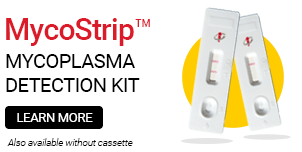THP-1 monocyte cell lines

Engineered Human Reporter THP-1 Monocytes
THP1 reporter cells are derived from THP-1, a human monocytic cell line. THP-1 cells were isolated from the peripheral blood of a male patient with acute monocytic leukemia. This suspension cell line has become a common model to study monocyte and macrophage activities in the context of immunology and oncology research. The THP-1 cell line naturally expresses many pattern-recognition receptors (PRRs), including Toll-like receptors (TLRs), the stimulator of interferon genes (STING), RIG-I-like receptors (RLRs), and various components of the inflammasome complex.
Therefore, THP-1 cells are a great tool to
- study specific gene function(s)
- investigate cell signaling pathways, inflammasome assembly, or autophagy
- screen for agonists/antagonists of relevant PRRs
- unravel the mysteries surrounding inflammasome activation
All our cell lines are extensively tested for viability, stability, biological activity, and absence of mycoplasma to ensure strong and reproducible results. Moreover, we provide detailed handling and experimental procedures for all cell lines, to minimize the need for optimization or troubleshooting by the end-user.
The collection comprises
- NF-κB / IRF Reporter Cells
- Cytosolic DNA Sensing Reporter Cells
- Interferon Pathway Reporter Cells
- PRR Reporter Cells (RLRs, STING, TLRs)
- Inflammasome Test Cells
- Autophagy Reporter Cells
Key Features
- Verified overexpression, knock-in, and/or knockout of important PRRs
- Stable expression of one or two reporter systems
- Quantifiable responses upon stimulation with pathogen-/damage-associated molecular patterns (PAMPs/DAMPs)
- Functionally tested and guaranteed mycoplasma-free
- Suspension cell line, suitable for transfection
- Differentiation into macrophages using PMA (Phorbol 12-myristate 13-acetate)
InvivoGen's THP1 Reporter Cells feature one or two inducible reporter genes for SEAP (secreted embryonic alkaline phosphatase) and Lucia luciferase. As a result, these cells allow the simultaneous study of the NF-κB and/or the IRF pathways, by assessing the activity of SEAP or the secreted Lucia luciferase. Both reporter proteins are readily measurable in the cell culture supernatant when using QUANTI-Blue™, a SEAP detection reagent, and QUANTI-Luc™ 4 Lucia/Gaussia, a Lucia luciferase detection reagent.
The Inflammasome Test Cells feature the overexpression, knockdown, or knockout of inflammasome genes of interest. The altered production of interleukin 1 beta (IL-1β), a hallmark cytokine of inflammasome activation, can be assessed using HEK-Blue™ IL-1β sensor cells. These cells express an NF-κB-inducible SEAP reporter gene, which enables rapid colorimetric detection, measurable in the cell culture supernatant when using QUANTI-Blue™. To follow inflammasome assembly or cell death, we provide THP-1-derived cell lines harboring GFP or Lucia fusion proteins.
Our THP-1 autophagy reporter cells are designed to monitor the autophagic flux using a fluorescent-labeled fusion protein.
Abbreviation: THP-1 = Tohoku Hospital Pediatrics-1 Cells




